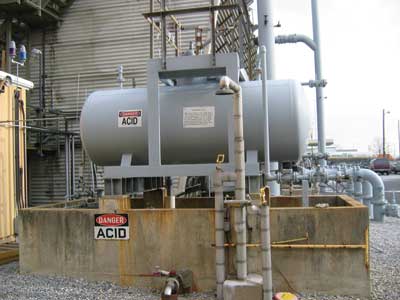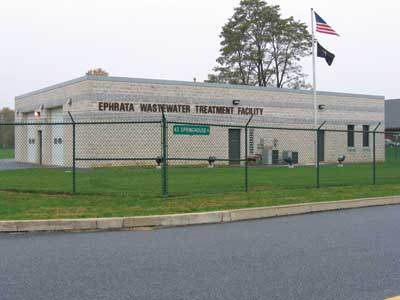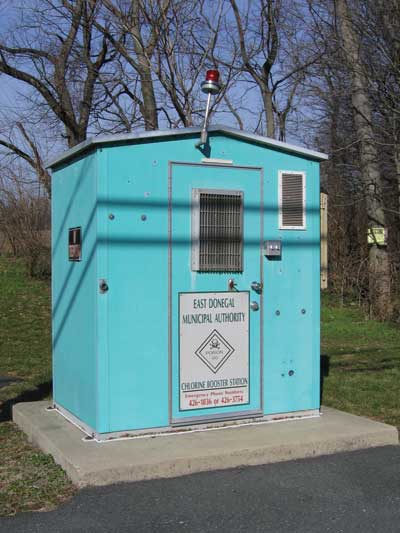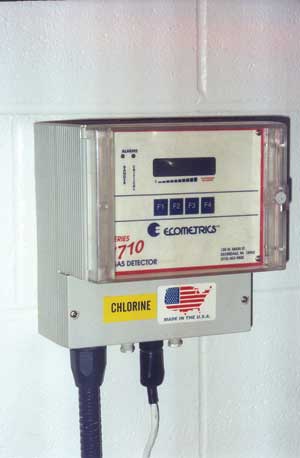BY ERIC G. BACHMAN
Since the passage of the Superfund Amendment Reauthorization Act (SARA) 25 years ago, I have found that its influence on the emergency services, especially the fire service, is not very well understood. Although the SARA legislation provides a means to improve preemergency preparedness, it is not comprehensively addressed in training programs. Below, I focus on SARA’s planning component and its capabilities and limitations and reveal what it provides the emergency service community preincident.
BACKGROUND
In October 1986, SARA Title III, also known as the Emergency Planning and Community Right to Know Act (EPCRA), was enacted. It was developed in reaction to a December 1984 incident in Bhopal, India, where an estimated 40 tons of methylisocyanate was released into the atmosphere, killing thousands and exposing more than 250,000 people. The responsible party was Union Carbide, an American-based company. Environmentalists and legislators in the United States realized that a similar disaster could occur here. Here, too, there were no emergency planning and public notification mechanisms in place for hazardous materials releases. This EPCRA legislation presented many elements that affected state government, local public safety entities, and business and industry. The legislation required states to establish state emergency response commissions (SERCs) to oversee hazardous materials planning and preparedness. It also designated emergency planning districts, which sparked the creation of what most people recognize as the local emergency planning committee (LEPC). The LEPC’s work is to identify community chemical hazards, develop emergency plans, and review accidental release reports—all with the goal of preventing chemical accidents and safeguarding the public.
The four major components of SARA Title III/EPCRA are emergency planning, emergency release notification, chemical reporting, and toxic release inventory (TRI) reporting. Each component has specific criteria, and each has specific local, state, and federal reporting and dissemination requirements, not all of which include the fire department. The TRI element relates to scheduled releases and waste management methodology, which are directly reported to the federal Environmental Protection Agency (EPA) and the respective state environmental entity.
The chemical reporting aspect includes initial notification of chemical use and an annual listing of reportable inventories. The chemical inventory list is typically disseminated through a Tier II Chemical Inventory Report.1 This provides general hazard and storage information on reportable inventories of materials used, stored, or manufactured by the facility during the previous calendar year. Tier II reports are required to be submitted annually but by no later than March 1, to the SERC, the LEPC, and the first-due fire department. The Tier II report has numerous intricacies that may benefit or hinder the fire department. However, they are not discussed here.
EXTREMELY HAZARDOUS SUBSTANCES (EHSs)
Some chemicals stored, used, and manufactured are deemed by the EPA as extremely hazardous substances (EHSs). The EPA’s “List of Lists” includes more than 350 EHS chemicals.2 In my county, the more common EHSs are chlorine, ammonia, and sulfuric acid. An EHS is typically identified when the LEPC reviews the chemicals listed in a Tier II report. Although Tier II reports are supposed to be submitted to the first-due fire department, that organization may not readily recognize that a substance is an EHS or realize its significance among other materials reported. This EHS designation impacts many entities, including the facility, the LEPC, and the local emergency services.
THRESHOLD PLANNING QUANTITY (TPQ)
For materials not deemed as EHSs, the reportable quantity generally is 10,000 pounds or more. For an EHS, the reporting criteria is based around the threshold planning quantity (TPQ) or 500 pounds.
On a Tier II report, an EHS must be reported if its quantity (total amount on site) is at least 500 pounds, or the TPQ, whichever is less. Chlorine has a TPQ of 100 pounds; therefore, if total on-site quantities meet or exceed 100 pounds, that must be reported. Sulfuric acid has a TPQ of 1,000 pounds (photo 1). The lesser of the reporting criteria is 500 pounds, so it would have to be reported when total on-site inventories meet or exceed 500 pounds. Sulfuric acid inventories of less than 500 pounds do not have to be reported on a Tier II report. The TPQ, which is not a constant figure for all EHSs, is the driving force behind whether an off-site emergency response plan (OSERP) is required. If the TPQ of an EHS is met or exceeded, the site is considered a SARA facility and requires an OSERP. The responsibility for this plan lies with the LEPC.
 |
| (1) Photos by author. |
SARA FACILITY
The term “SARA facility,” when combined with the common EHSs listed above, yields a plethora of typical venues. Wastewater treatment plants using gaseous chlorine (photo 2), large industrial complexes using multiple EHSs including sulfuric acid (photo 3), and other chemical processing facilities are commonly envisioned. However, there is no SARA facility stereotype. It can be any facility. Building size does not establish the significance of harm to the community—what’s in it does. A SARA facility can be any occupancy type including a large industrial complex or a small unassuming site, such as an unstaffed chlorination station, with limited or no employee staffing (photo 4). It can be a nationally known company or a local mom-and-pop establishment, like a local farm market that uses anhydrous ammonia for refrigeration (photo 5). Do you know if you have a SARA facility in your district?
 |
| (2) |
 |
| (3) |
 |
| (4) |
 |
| (5) |
OFF-SITE EMERGENCY RESPONSE PLAN
The purpose of an OSERP, under SARA Title III/EPCRA, is to improve community preparedness for off-site releases. It is a mechanism to initiate public protective actions and facilitate effective unified incident management. The plan affects the facility, local emergency response agencies, and external supporting facilities and entities. The key to using the plan effectively is to understand its purpose, intent, content, and limitations and to exercise with it preincident.
The plan includes an off-site release consequence methodology that prescribes a theoretical vulnerability zone. This is important to identify population exposure and special-needs facilities (photo 6). Certain facility-specific elements, such as the method for detecting a release, are featured as well. In some instances, a monitored detection device will trigger an alarm—e.g., a fixed chlorine detection system at a water treatment plant (photo 7). In other cases, individual human senses may be the only means of detection. In either case, in the event of a release, the plan should include a notification tree of what information the facility must report and to which agencies it must report. If the incident requires off-site assistance, the plan outlines the role and responsibilities of key stakeholders and provides a mechanism for establishing a unified command structure.
 |
| (6) |
 |
| (7) |
Certain site-specific information typically includes a general overview of the facility’s processes/functions and may include hours of operation and an employee census. But remember, the plan focuses on the off-site consequences of a release, not the on-site profile. Its prime concern is not situations and circumstances unrelated to the reported EHS. The plan requires a list of facility coordinators and contact information; facility equipment; and, if applicable, subject matter expert resources.
In addition, the plan outlines community resources beyond those that local emergency services maintain. Identified preincident, these are resources needed to mitigate and support an incident, including heavy earth-moving equipment, buses, and mass-care shelters. The estimated population exposure within the vulnerability zone is necessary to determine the appropriate number of needed mass-care centers.
The planning template can vary. In Pennsylvania, the Pennsylvania Emergency Management Agency (PEMA) maintains a directive for LEPCs to use to prepare, review, and maintain SARA Title III OSERPs and also establishes minimum content criteria for each plan developed.
PLAN DEVELOPMENT
As mentioned above, the LEPC is responsible for planning. In Pennsylvania, once the LEPC develops and approves the plan, it forwards it to the SERC to review and approve, ensuring that it addresses all planning elements prescribed in the planning directive. The LEPC distributes the plan to the local emergency service organizations—including the first-due fire department, law enforcement agency, and emergency medical services—so they are better prepared. Commonly, it also distributes copies to the facility manager, the local municipal emergency management coordinator (EMC), and the hazmat response team.
PLAN CONSIDERATIONS
Agencies hosting a SARA facility in their districts may have common misunderstandings about the OSERP. It is imperative that agencies that receive OSERPs understand the plan’s intent, capabilities, and limitations. It addresses the consequences of an off-site EHS release—i.e., if the substance goes off the facility property.
Each plan prescribes a vulnerability zone, which, in the worst-case scenario, the product would theoretically travel. This enables planners to identify the at-risk populations and facilities within the zone. In most cases, the vulnerability zone is the footprint of the area that a complete release of product would affect over a certain period of time. Personally, I dislike the term “worst-case scenario” because there is no such thing; situations can always be worse. I prefer to call it the “best-case scenario” because these zones are predicated on prescribed atmospheric and release factors that the plan centers on. Real world, there are too many variables that can change the calculated vulnerability zone footprint and influence the outcome of a situation. Always keep an open mind, and conduct continuous size-up when dealing with hazardous material incidents. If your mindset is fixed on what the plan prescribes, then when things don’t go according to plan anxiety levels rise and things start to domino downhill quickly.
Some chief officers mistakenly consider the OSERP a facility preplan because it includes facility-specific information, site maps, and sometimes floor plans. I am responsible for initially developing OSERPs in Lancaster County, Pennsylvania; one fire chief thanked me for “preplanning” some of the buildings (that are SARA facilities) in his first-due area. “That is one less thing I have to worry about!” he remarked. However, the OSERP is not a preplan. The site-specific information provided is by no means comprehensive. There is a plethora of data not typically included in an OSERP that a fire department preplan should identify, locate, and account for prior to an incident. OSERPs typically do not include critical preparedness elements such as utility shut-offs, construction methodology, and detailed fire protection features. Some plans may include related data, depending on the facility’s complexity. But the basic planning template does not require these data.
The OSERP is not a strategy and tactics document. Remember, the plan focuses on an off-site EHS release, not a structure fire. Certain off-site details offered in the plan will help to formulate incident objectives from which strategy and tactics can be developed. However, the plan is not an on-site operational strategy and tactics listing.
A third OSERP consideration is that the plan centers on the EHSs reported at or above planning quantities. No matter how many other nonEHS materials or in what quantities the facility uses, stores, or manufactures, the plan addresses only EHSs. It may list other nonEHSs on site or include a copy of the most recent Tier II report, but other nonEHS materials are not required in the plan. A facility may have a boatload of “methyl ethyl bad stuff,” but if it’s not an EHS, or its quantity is below the TPQ, it will most likely not be in the plan.
The considerations are many, and those mentioned above are the most common misconceptions. The OSERP is a useful tool for preincident preparation and should not be dismissed in favor of other preplanning means. Like with any tool, its users must learn to use it properly, practice with it frequently, and employ it when something occurs.
TRAINING PROGRAM
Because of these misunderstandings and the detrimental effects that can result from improper use of or dependence on the plan, I developed the “First Due Chemical Intelligence” (FDCI) training program for delivery to local fire departments in my county. The two-hour program is an overview of SARA Title III/EPCRA. It reveals why a fire department receives Tier II reports from only some facilities and not others and provides the tools to interpret the content of a Tier II report. The FDCI program provides an overview of OSERPs and reviews the capabilities and limitations of the Lancaster County planning template, discussing its challenges from the LEPC and fire department perspectives.
This is not a boilerplate, one-size-fits-all program. I customize each program delivery to the fire department being trained for greater impact on those who live in and protect the area. We use and review Tier II reports from facilities in that jurisdiction. Sometimes, firefighters are surprised to learn of this resource; typically the report is sent to the fire chief and stops there. Very infrequently is a Tier II report posted on a fire station bulletin board, made part of a company training session, or included in preincident preparedness mediums. We also preview an OSERP for a SARA facility in the department’s district to better understand the plan’s purpose and content. This resource, too, frequently makes it no further than the chief’s office. The FDCI training can be a catalyst to further local preparedness efforts, such as holding training exercises with other stakeholders. Or it can spark additional preplanning efforts to obtain data from a facility not required or provided in the OSERP.
INFORMATION SHARING
As mentioned above, the LEPC distributes the plans to the local response organizations. In Lancaster County, the LEPC used to distribute hard-copy plans to the first-due response agencies (fire, law enforcement, EMS, the local EMC, and the hazmat team). Maintaining current information was a nightmare, since some agencies updated their information while others didn’t.
Three years ago, as more and more county emergency service organizations added laptop computers to their vehicles, they copied their jurisdiction-specific plans to a CD and respectively distributed it on electronic media. In early 2009, the LEPC discussed the county’s automatic-aid system and other instances of mutual aid where the information was not readily available. In the end, the LEPC made a CD that included each county SARA facility OSERP and distributed copies to each fire, law enforcement, and emergency medical service in the county.
In fall 2009, the LEPC distributed a CD with all 166 SARA facility OSERPs to each of the county’s 80 independent fire departments, 37 law enforcement agencies, and 30 EMS organizations; the county hazmat team; and the 60 local emergency management coordinators. For fire departments, this is a tremendous asset, especially given their daily dependence on automatic and mutual aid. If the host fire department is unable or slow to respond to an incident at a SARA facility, an automatic-aid company may arrive sooner and will have the information readily available. Additionally, sometimes transfer assignments bring in units unfamiliar with the area. Having the CD provides them information on the SARA facilities they now must protect. Information maintenance issues are also reduced, since an updated CD is distributed annually and the old one can be recycled.
All agencies, however, are reminded to observe good operational security with the data, since the OSERPs contain important information not for public use. Sensitive information is reviewed among the facility, the LEPC, and the fire department. So far, this practice has received good reviews.
Entities external to the fire department often develop plans and procedures that impact the department’s operations. Hence, it is critical for department leaders to review these documents and understand the expectations and limitations. When responders are dispatched to an incident, the plan or procedure should not hinder the operation, and stakeholder organizations should be able to work cooperatively. Remember, however, that every emergency starts and ends locally. No matter how much preparedness another entity (i.e., LEPC) does for your fire department, you are responsible to be prepared to protect the sites and citizens in your district. Embrace preparedness mediums such as the OSERP, but also understand what they can (their purpose) and cannot (information not included) do for you. Understanding what they can and can’t do for you should be a catalyst to improve your preincident preparedness efforts.
Endnotes
1. Bachman, Eric G. “Tier II Chemical Report: A Preplanning Resource,” Fire Engineering, March 1998, 182-186. http://emberly.fireengineering.com/articles/print/volume-151/issue-3/features/tier-ii-chemical-inventory-form-a-preplanning-resource.html).
2. Environmental Protection Agency, List of Lists: Consolidated List of Chemicals Subject to the Emergency Planning and Community Right-To-Know Act (EPCRA) and Section 112(r) of the Clean Air Act, October 2001, http://www.epa.gov/ceppo/pubs/title3.pdf.
ERIC G. BACHMAN, CFPS, a 29-year veteran of the fire service, is former chief of the Eden Volunteer Fire/Rescue Department in Lancaster County, Pennsylvania. He is the hazardous materials administrator for the County of Lancaster Emergency Management Agency and serves on the Local Emergency Planning Committee of Lancaster County. He is registered with the National Board on Fire Service Professional Qualifications as a fire officer IV, fire instructor III, hazardous materials technician, and hazardous materials incident commander. He has an associate degree in fire science and earned professional certification in emergency management through the state of Pennsylvania. He is also a volunteer firefighter with the West Hempfield (PA) Fire & Rescue Company.
More Fire Engineering Issue Articles
Fire Engineering Archives

